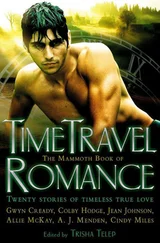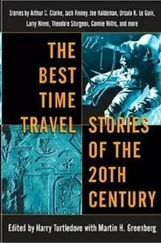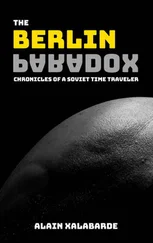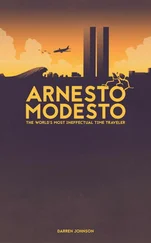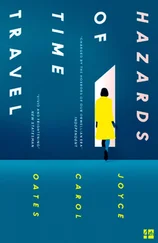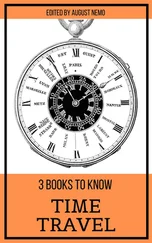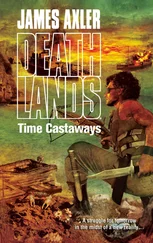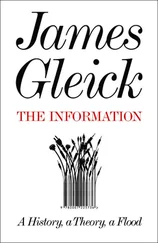James Gleick - Time Travel
Здесь есть возможность читать онлайн «James Gleick - Time Travel» — ознакомительный отрывок электронной книги совершенно бесплатно, а после прочтения отрывка купить полную версию. В некоторых случаях можно слушать аудио, скачать через торрент в формате fb2 и присутствует краткое содержание. Год выпуска: 2016, Издательство: Knopf Doubleday Publishing Group, Жанр: Старинная литература, на английском языке. Описание произведения, (предисловие) а так же отзывы посетителей доступны на портале библиотеки ЛибКат.
- Название:Time Travel
- Автор:
- Издательство:Knopf Doubleday Publishing Group
- Жанр:
- Год:2016
- ISBN:нет данных
- Рейтинг книги:5 / 5. Голосов: 1
-
Избранное:Добавить в избранное
- Отзывы:
-
Ваша оценка:
- 100
- 1
- 2
- 3
- 4
- 5
Time Travel: краткое содержание, описание и аннотация
Предлагаем к чтению аннотацию, описание, краткое содержание или предисловие (зависит от того, что написал сам автор книги «Time Travel»). Если вы не нашли необходимую информацию о книге — напишите в комментариях, мы постараемся отыскать её.
Time Travel — читать онлайн ознакомительный отрывок
Ниже представлен текст книги, разбитый по страницам. Система сохранения места последней прочитанной страницы, позволяет с удобством читать онлайн бесплатно книгу «Time Travel», без необходимости каждый раз заново искать на чём Вы остановились. Поставьте закладку, и сможете в любой момент перейти на страницу, на которой закончили чтение.
Интервал:
Закладка:
*2 The OED cites Asimov as the coiner of several words, including robotics, but endochronic is not one of them. It has not yet caught on.
*3 Silly? Yet in the distant future—2015—Panasonic marketed a camera that it said recorded images “one second prior to and one second after pressing the shutter button.”
*4 This passage appeared in the first published version of The End of Eternity and disappeared from the book version.
NINE
Buried Time
So in the future, the sister of the past, I may see myself as I sit here now but by reflection from that which then I shall be.
—James Joyce (1922)
IN ITS ISSUE of November 1936, Scientific American transported readers into the future:
The time is A.D. 8113. The air channels of the radio-newspaper and world television broadcasting systems have been cleared for an important announcement…a story of international importance and significance.
(Evidently it seemed plausible that the world’s communications channels could be “cleared” on command.)
The television sight-and-sound receivers in every home throughout the world carry the thread of the story. In the Appalachian Mountains near the eastern coast of the North American continent is a crypt that has been sealed since the year A.D. 1936. Carefully its contents have been guarded since that date, and today is the day of the opening. Prominent men from all over the world assemble at the site to witness the breaking of the seal that will disclose to the waiting world the civilization of an ancient and almost forgotten people.
The ancient and almost forgotten people of 1936 America, that is. This puff was headlined “Today—Tomorrow” and written by Thornwell Jacobs, a former minister and advertising man, now president of Oglethorpe University, a Presbyterian college in Atlanta, Georgia. Oglethorpe had been shuttered since the Civil War. Jacobs re-created it in partnership with a suburban land developer. Now he was promoting his idea, “heartily endorsed” by Scientific American, for a Crypt of Civilization, to be waterproofed and sealed in the basement of the administration building on his campus. Jacobs was also a teacher: his course in cosmic history was mandatory for Oglethorpe seniors. Not presuming that Oglethorpe University itself would last forever, he proposed that the crypt should be “deeded in trust to the Federal government, its heirs, assigns, and successors.” Its contents? A thorough record of the era’s “science and civilization.” Certain books, especially encyclopedias, and newspapers preserved in a vacuum or inert gas or on microfilm (“preserved in miniature on motion picture film”). Everyday items such as foods and “even our chewing gum.” Miniature models of automobiles. And: “There should also be included a complete model of the capitol of the United States, which, within a half-dozen centuries, will probably have disappeared completely.”
Time magazine and Reader’s Digest picked up the story, and Walter Winchell touted it in one of his radio broadcasts, and the crypt was completed at a ceremony in May 1940. Something about “burying” appealed to people. David Sarnoff of the Radio Corporation of America declared, “The world is now engaged in burying our civilization forever and here in this crypt we leave it to you.” The United Press reported:
ATLANTA, Ga., May 25—They buried the twentieth century here today.
Mickey Mouse and a bottle of beer, an encyclopedia and a movie-fan magazine were put to rest along with thousands of other objects depicting life as it is known today.
Buried our civilization? Buried the twentieth century? The century kept going, making new stuff, even after 1940. What Jacobs really buried was a collection of knickknacks. There was a set of Lincoln Logs children’s toys, a sheet of aluminum foil, some women’s stockings, model trains, an electric toaster, and phonograph records bearing the voices of Franklin Roosevelt, Adolf Hitler, King Edward VIII, and other world leaders. Some items bound to cause puzzlement: “1 distributor head cover”; “1 sample of catlinite”; “1 lady’s breast form.” All neatly shelved, a stainless-steel door was welded shut, and so it remains, a quiet room in the basement of what is now called Phoebe Hearst Memorial Hall. *1
Imagine how excited the world will be when May 28, 8113, finally arrives. *2
—
MEANWHILE, the event in Georgia was upstaged by another up north. A public relations man at the Westinghouse Electric and Manufacturing Corporation named G. Edward Pendray—a rocket enthusiast and sometime science-fiction writer—trumped the crypt with a swifter and sleeker package for the future, to be plunged into the ground at the 1939 New York World’s Fair—the “World of Tomorrow”—in Flushing, Queens. Instead of a whole room, Westinghouse designed a shiny half-ton torpedo, seven feet long, with an inner glass tube and an outer shell of Cupaloy, a special new alloy of rust-proof hardened copper. Pendray first wanted to call this device a “time bomb,” but that term had a different meaning.
So on second thought he came up with “time capsule.” Time, encapsulated. Time in a capsule. A capsule for all time.
The newspapers waxed enthusiastic. “The famous ‘time capsule,’ ” the New York Times called it, days after it was announced in the summer of 1938. “Its contents will no doubt prove to be distinctly quaint to the scientists of 6939 A.D. *3—as strange, probably, as the furnishings of Tut-ankh-Amen’s tomb seemed to us.” The Tutankhamun reference was apt. The burial chamber of the Eighteenth Dynasty pharaoh had been discovered in 1922, causing a sensation: the royal sarcophagus was intact; the British excavators uncovered precious turquoise, alabaster, lapis lazuli, and preserved flowers that disintegrated upon touch. Inner rooms revealed statuettes, chariots, model boats, and wine jars. The pharaoh’s funerary mask, solid gold and striped with blue glass, became iconic. So did the very idea of a buried past.

Credit 9.1
Archeology helped people think about the future as well as the past. Cuneiform tablets were turning up in the desert sands, bearing secrets. The Rosetta Stone, another icon, sat at the British Museum, where for decades no one could read its message—a message to the future, people said, but it hadn’t been meant that way. It was for immediate distribution: a decree from king to subjects; pardons and tax rebates. Remember, the ancients had no futurity. They cared less for us than we do for the people of 8113, apparently. Egyptians preserved their treasures and remains for passage to the afterlife, but they weren’t waiting for the future. They had a different place in mind. Whatever their intent, their eventual legatees were archeologists. So when 1930s Americans began interring their own treasures, they quite self-consciously considered themselves to be enacting archeology in reverse. “We are the first generation equipped to perform our archeological duty to the future,” said Thornwell Jacobs.
At the World’s Fair, Westinghouse saved space by enclosing 10 million words on microfilm. (They included instructions on how to make a microfilm reader. The time capsule did not have room for one, so a small microscope had to do.) “THE ENVELOPE FOR A MESSAGE TO THE FUTURE BEGINS ITS EPIC JOURNEY,” said the official Westinghouse Book of Record of the Time Capsule of Cupaloy, *4which was printed and distributed to libraries and monasteries for preservation. Written in an odd faux-biblical prose—as if addressing monks of the Middle Ages, rather than historians of the future—the book advertised the achievements of modern technology:
Читать дальшеИнтервал:
Закладка:
Похожие книги на «Time Travel»
Представляем Вашему вниманию похожие книги на «Time Travel» списком для выбора. Мы отобрали схожую по названию и смыслу литературу в надежде предоставить читателям больше вариантов отыскать новые, интересные, ещё непрочитанные произведения.
Обсуждение, отзывы о книге «Time Travel» и просто собственные мнения читателей. Оставьте ваши комментарии, напишите, что Вы думаете о произведении, его смысле или главных героях. Укажите что конкретно понравилось, а что нет, и почему Вы так считаете.


